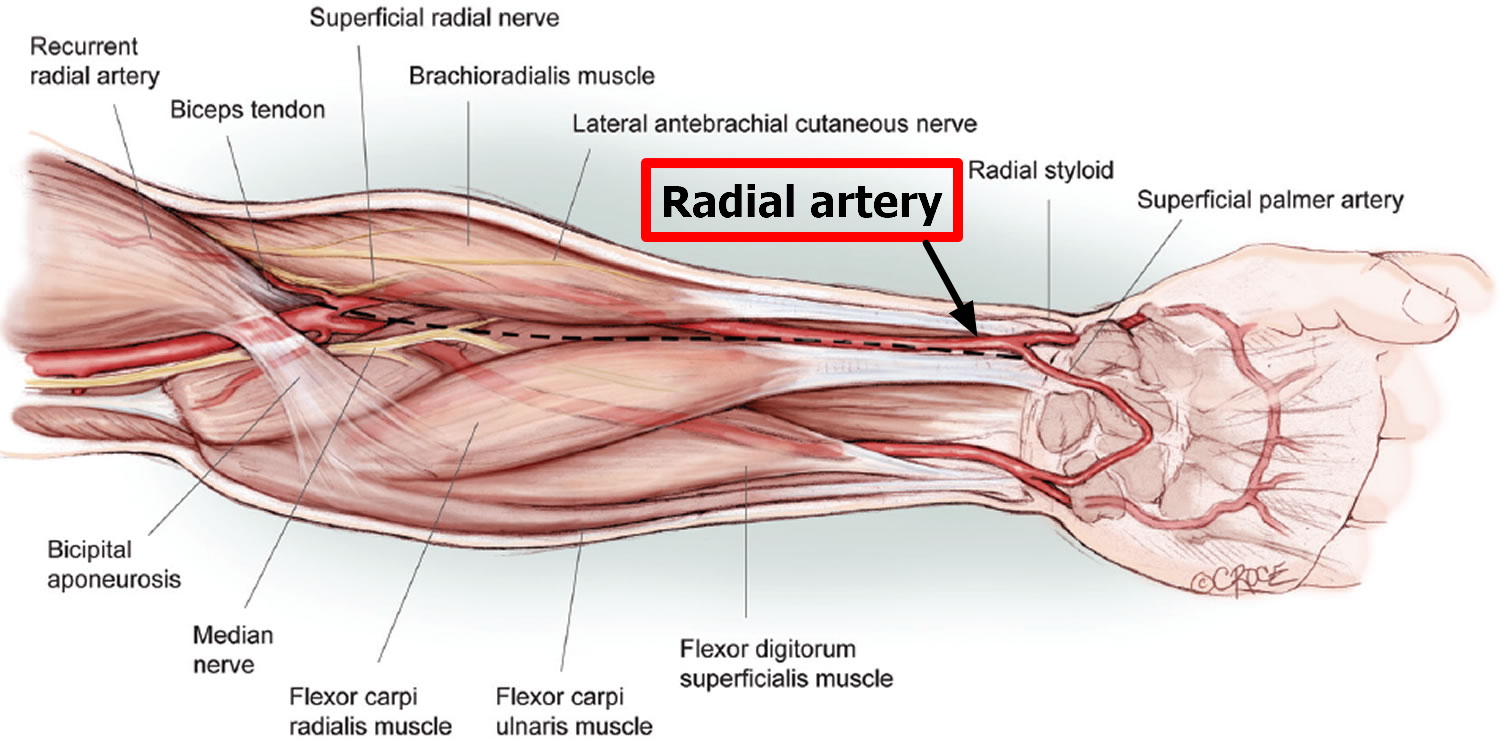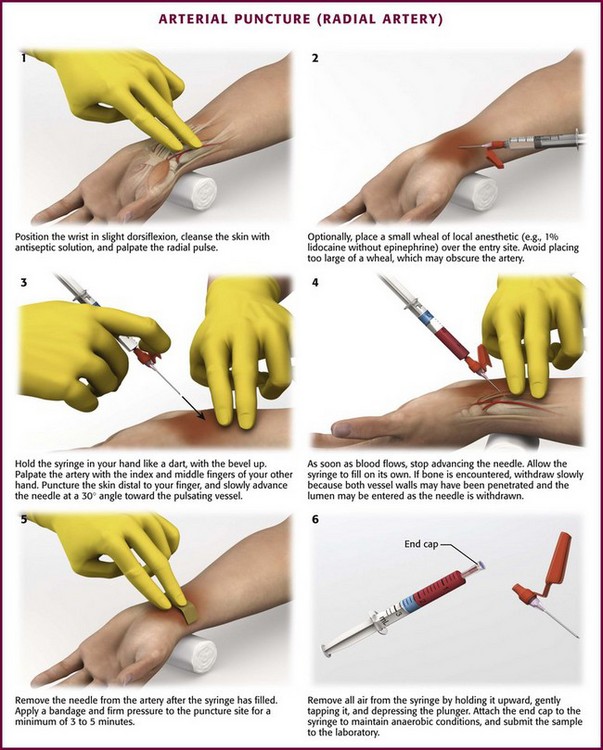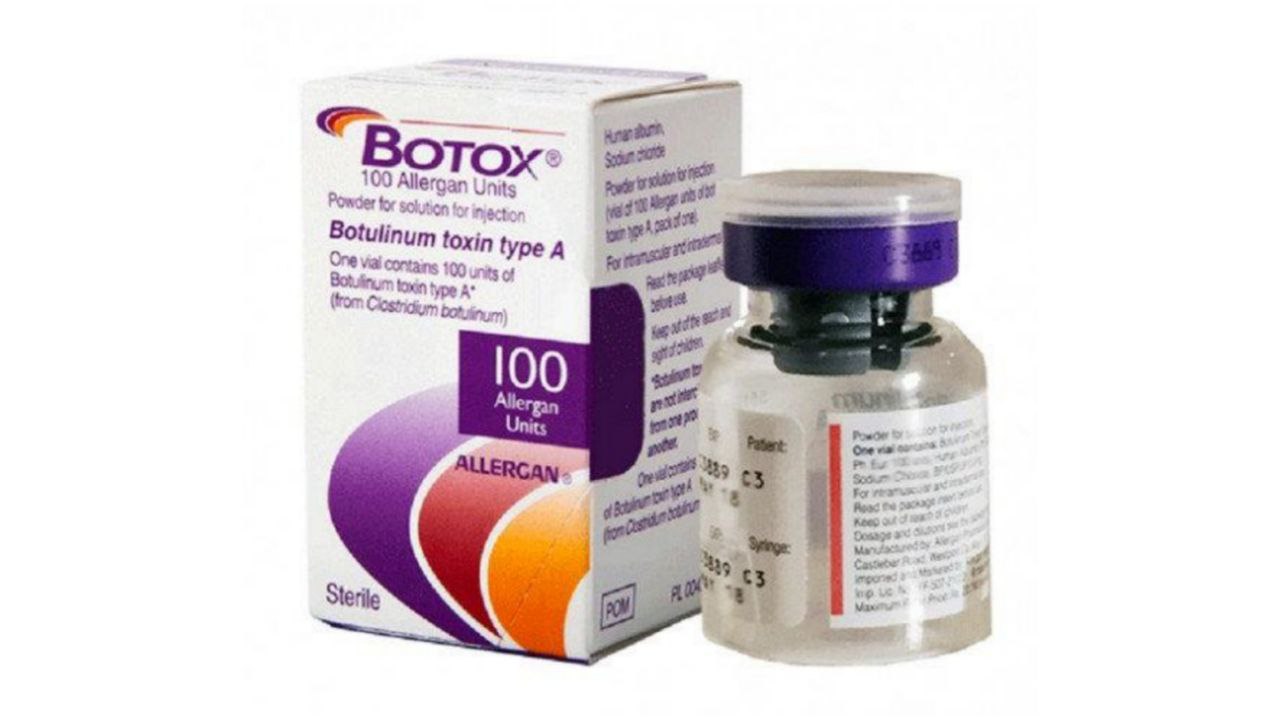
Radial Artery Clinical Notes
By : Sedra Muhammed
the radial artery is clinically important due to its superficial position on the wrist which makes the pulse more detectable.
Thus it’s used as a medium to assess the heart rate and cardiac rhythm. Most clinicians take the radial pulse between the tendons of the brachioradialis m. and flexor carpi radialis m.
The radial artery is also used for coronary artery bypass grafting and is growing in popularity among cardiac surgeons.
The radial artery is an ideal graft candidate due to its diameter, length, and ease of harvesting of the blood vessel.
The radial artery is often punctured in a common procedure to obtain an arterial blood gas. Such a procedure may first involve an Allen's test.
Thus it’s used as a medium to assess the heart rate and cardiac rhythm. Most clinicians take the radial pulse between the tendons of the brachioradialis m. and flexor carpi radialis m.
The radial artery is also used for coronary artery bypass grafting
Note
coronary artery bypass graft: It diverts blood around narrowed or clogged parts of the major arteries to improve blood flow and oxygen supply to the heart, in other word we can replace the coronary artery with the radial artery.The radial artery is an ideal graft candidate due to its diameter, length, and ease of harvesting of the blood vessel.
The radial artery is often punctured in a common procedure to obtain an arterial blood gas
Note
arterial blood gas (ABG): test measures the oxygen and carbon dioxide levels in your blood as well your blood's pH balance. The sample is taken from an artery, not a veinNote
he Allen test is used to assess collateral blood flow to the hands, generally in preparation for a procedure that has the potential to disrupt blood flow in either the radial or the ulnar artery. These procedures include arterial puncture or cannulation and the harvest of the artery alone or as part of a forearm flap. A negative Allen test means that the patient likely does not have an adequate dual blood supply to the hand, which may present a contraindication to the planned procedure or at least suggest that further evaluation is necessary. This activity reviews the Allen test technique and discusses the interprofessional team's role in applying this maneuver to improve patient outcomes.
The radial artery is also used to evaluate the collateral circulation of blood through the hands.
Note
* Collateral circulation: it’s the alternate circulation around a blocked artery or vein via another path, such as nearby minor vessels..jpg)

References:
Sajja, Lokeswara Rao; Mannam, Gopichand; Pantula, Narasinga Rao; Sompalli, Sriramulu (June 1, 2005). "Role of Radial Artery Graft in Coronary Artery Bypass Grafting". The Annals of Thoracic Surgery.
Cohen, Gideon; Tamariz, Miguel G.; Sever, Jeri Y.; Liaghati, Negin; Guru, Veena; Christakis, George T.; Bhatnagar, Gopal; Cutrara, Charles; Abouzahr, Labib (2001). "The radial artery versus the saphenous vein graft in contemporary CABG: a case-matched study". The Annals of Thoracic Surgery.
Cohen, Gideon; Tamariz, Miguel G.; Sever, Jeri Y.; Liaghati, Negin; Guru, Veena; Christakis, George T.; Bhatnagar, Gopal; Cutrara, Charles; Abouzahr, Labib (2001). "The radial artery versus the saphenous vein graft in contemporary CABG: a case-matched study". The Annals of Thoracic Surgery.
